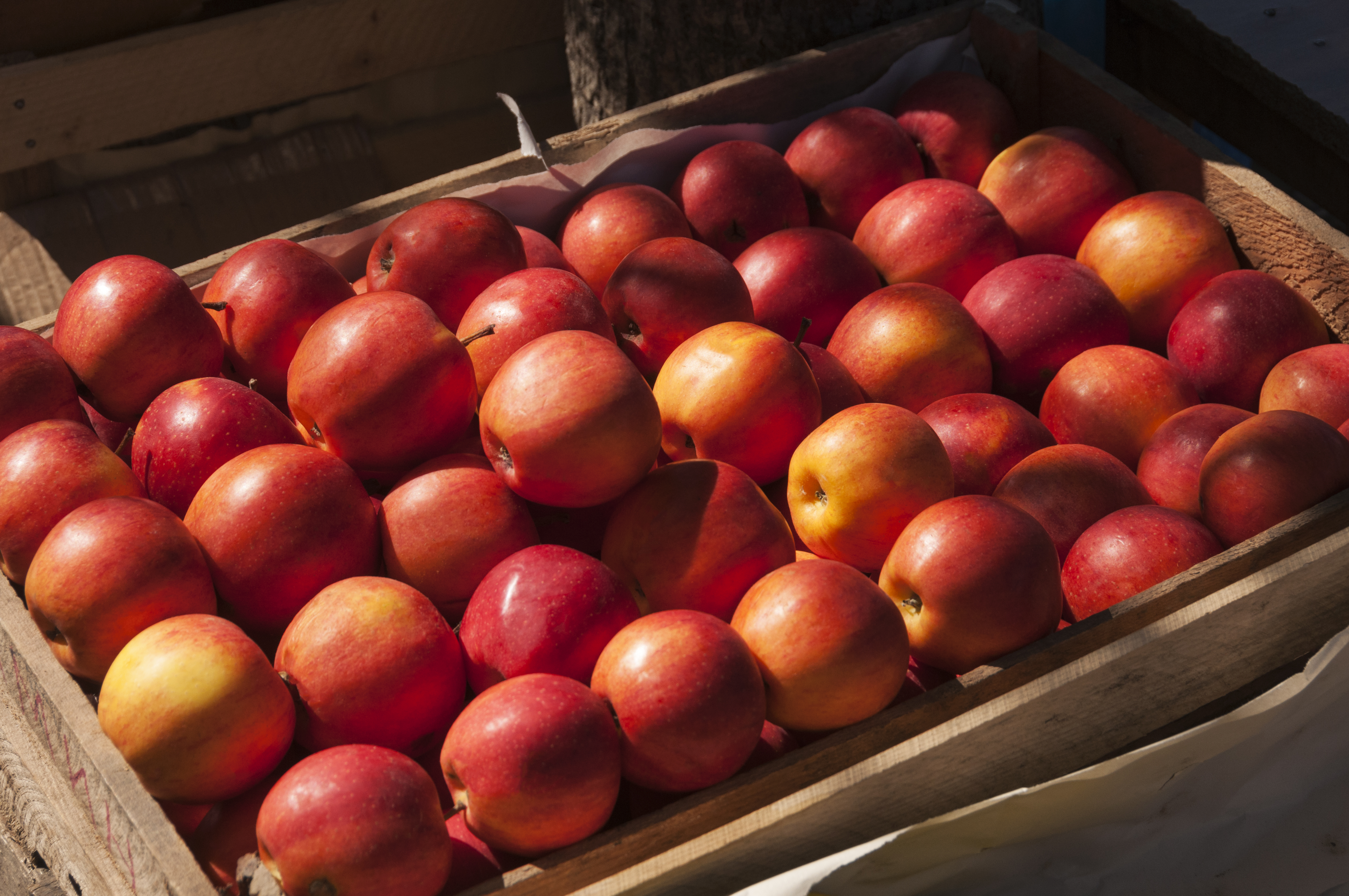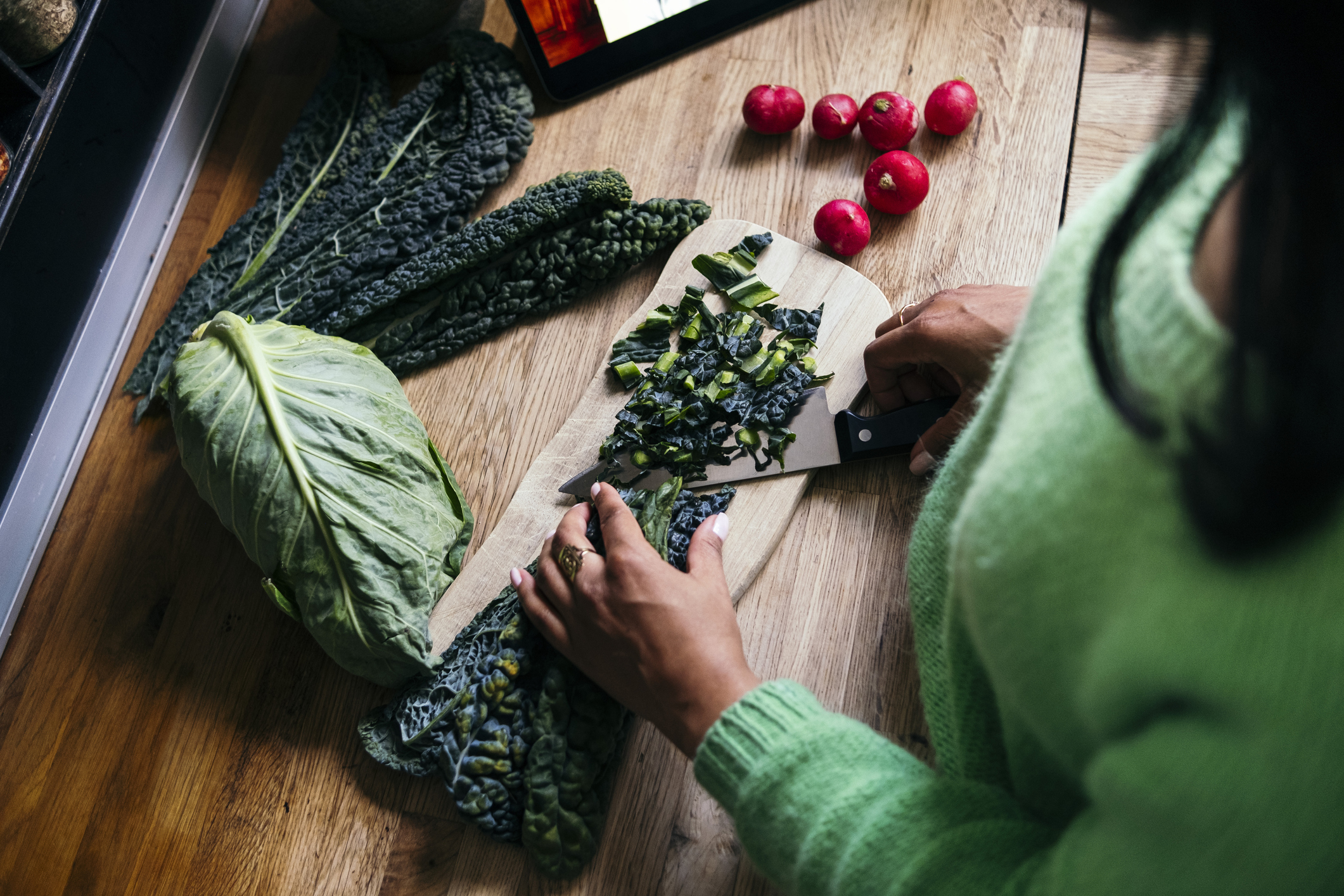“For example, when you want something sweet reach for dates,” says Cristie Besu, certified sports nutritionist and the founder of Eat Me Guilt Free. “These little super fall sweets are packed with 20 grams of fast-absorbing carbohydrates that are essential to building muscle after a vigorous strength workout.” While for snacking roasted or raw pumpkin seeds are a go-to. “They are great to snack on before bed because they are high in fat which help satiate hunger and attack those midnight munchies. Pumpkin seeds are an excellent source of iron, with 2.5 mg of iron per oz.”
But there are plenty of other good-for-you superfoods that are at their peak this time of year. Keep reading for dietician and recipe developer at Cheerful Choices, Mackenzie Burgess, RDN, favorite picks.
Cauliflower
“Cauliflower has its peak season during the fall months of September to November. As a dietitian, I’m always adding cauliflower to my plate—it’s low in calories and rich in nutrients like vitamin C, folate and fiber. If you’re not a huge fan of cauliflower by itself and looking for creative ways to sneak it in, try blending into smoothie bowls or creamy sauces. You’ll also find it in fun products like these Cali’flour Foods flatbreads and pizza crusts. I love how these contain fresh cauliflower as the main ingredient alongside two other simple ingredients–egg whites and mozzarella.”

Apples
“Although apples are available all year, many varieties reach peak season during the fall. One of my favorite varieties to enjoy year-round is Envy Apples because they have balanced sweetness, delicious crunch, and naturally remain white longer. Apples are a great source of soluble fiber and immune-supporting vitamin C. Try adding apples to baked goods, slice over salads, or blend into morning smoothies.”
Pumpkin
“Fall isn’t complete without enjoying something that’s pumpkin-flavored. Pumpkin is a great source of beta-carotene which is a powerful antioxidant and is converted to vitamin A in the body. Pumpkin may also support immunity due to its high levels of several immune boosting vitamins, including vitamin C. Try adding pumpkin puree to oatmeal, soups, or mug cakes.”
Beets
“Along with adding amazing color to your dishes, beets are chock-full of nutrients like vitamin A, vitamin C, and heart healthy nitrates. Beets get their vibrant red color from betalain pigments which have been found to support the immune system and have anti-inflammatory effects. I like to roast cubed beets and add them over grain bowls or goat cheese salads.”

Kale
“Although kale often gets a bad rap due to its rough texture and bitter taste, when prepared correctly it can be a great seasonal green to include in your diet. Kale is packed with nutrients like vitamins C, K, and E; calcium; and beta-carotene. Try massaging kale with some oil and salt to break down some of the bitterness before using it in a salad. Kale is also a great addition to one pot soups and pasta dishes.”
Winter Squash
“There are so many varieties of winter squashes including acorn, butternut, and spaghetti. The yellow and orange color of these squashes means they’re packed full of a plant pigment called “carotenoids”. Carotenoids have many beneficial roles in the body like supporting immune and eye health as well as protecting the skin and cardiovascular systems through their antioxidant effects. Try making spaghetti squash pasta, adding roasted acorn squash to stir fries, or blending butternut squash into a comforting soup.”




